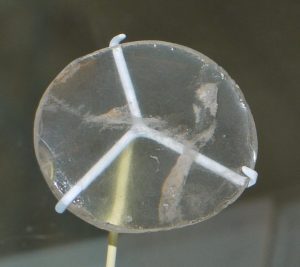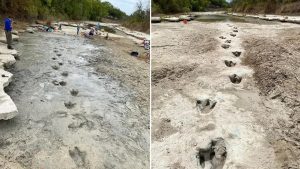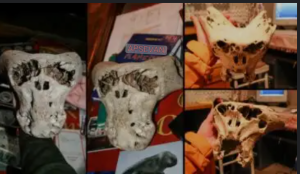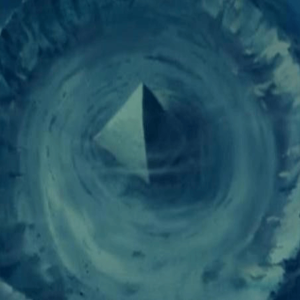WHY DID THE US FLYING SAUCER PROJECT FAIL?
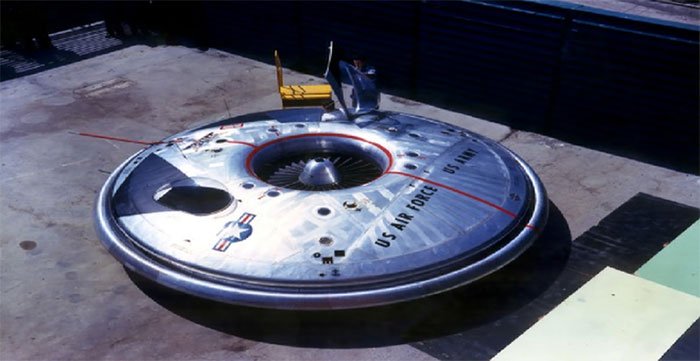
In the early years of the Cold War, the US military conducted a secret project called VZ-9 Avrocar with the ambition to build a flying saucer with supersonic speed, able to take off vertically. However, the project was gradually “dead” because it did not meet the technical requirements set forth. The process of implementing this project has contributed to weaving the mysterious story of UFOs.
Secret Project
During the Cold War years, the arms race between the US and the Soviet Union took place extremely fiercely. Both superpowers strive to develop the most modern and strange weapons to prevail over the other.
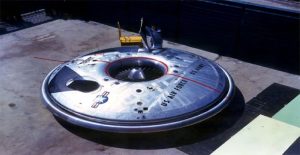
The VZ-9 is the Pentagon’s secret flying saucer project. (Photo: Business Insider).
One of the projects that the US Pentagon has high expectations and enthusiasm is to develop an aircraft shaped like a flying saucer with many outstanding features such as being faster than the speed of sound and capable of flying. vertical take-off and landing. The project was started in 1955 as the VZ-9 Avrocar. This project is essentially the end result of a series of projects implemented by designer Jack Frost (an engineer at Avro Canada).
In 1952, Avro Canada embarked on the idea of producing a supersonic aircraft with rounded wings at the periphery of the main fuselage like the flying saucer that people often say is the product of aliens. At that time, the aircraft industry was interested in aircraft that could take off and land vertically.
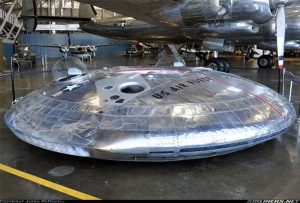
The VZ-9 Avrocar has neither wings nor propellers, it has three turbofan engines with three air intakes to keep it airborne.
Because, it is thought that a nuclear war if it breaks out in Europe will certainly start with mutual nuclear attacks to destroy most of the enemy’s air bases. So planes need to be able to operate in tight ranges at air bases, on the streets or even in fields.
According to Jack Frost, his flying saucer can land and take off vertically with the help of a circular turborotor powered by a jet engine. Directing the thrust downwards creates a ground effect, causing the aircraft to hover in the air at low altitude, while the direct thrust to the rear causes the saucer to fly forward. Jack Frost believes that the disc-shaped plane will be able to take off and land vertically and at supersonic speeds.
Canadian defense officials then provided $400,000 for the project. However, things were not easy, after 2 years of participation, the Government of Canada abandoned the project because it was too expensive to maintain. Fortunately, after the Government of Canada gave up, the US Air Force received information about the project and found it to be promising to meet their needs. The US military at that time wanted a reconnaissance aircraft that could operate in all terrains, take care of transport and reconnaissance missions.
Meanwhile, the US Air Force wants a jet that can take off and land vertically, can avoid enemy radar by flying at low altitude and then fleeing at supersonic speeds. These two needs are different but similar in that the aircraft operates on the Coanda effect mechanism (a principle of bending the air flow to create aerodynamic lift) of Avro Canada if built as a will fulfill their wishes.
Thus, in 1955, the US Air Force signed a contract worth $750,000 to revive the project. In 1957, the US poured another 250,000 USD into the project.
Failure Declassified
US documents later said that, after taking over the project from Canada, the US quickly began to produce their flying saucer.
According to the document, the US Air Force flying saucer has been designed to reach speeds of Mach 4, which is four times the speed of sound, can operate at altitudes above 30,480m and has a range of about 1,850 kilometer. The aerodynamic design of the VZ-9 flying saucer is very unusual, with a jet engine in the center of the saucer. The Coanda effect is also applied to the design. According to the prototype, the US flying saucer has a diameter of 5.5m; has a height of 1.07m and a weight of nearly 1.4 tons; Maximum payload at take-off is more than 2.5 tons.
Take-off, flight, and landing are controlled by an air-flow thrust control system located in the outermost ring below the saucer. Thanks to the engine in the center, the VZ-9 is capable of taking off vertically quite easily. In May 1959, the flying saucer was finally completed and put into a static test in the wind tunnel. Three months later, in August 1959, the VZ-9 made its first flight.
However, the tests showed that the aerodynamic stability control of the flying saucer was very difficult. The hot air of the engine circulates below, causing the frame structure to be easily deformed due to temperature. By April 1961, test flights resumed after several design improvements. In this test, the flying saucer achieved a maximum speed of about 190km / h, 3 times faster than the previous speed of only 56km / h, but the engineers still could not control the aerodynamic stability of the aircraft. muscle.
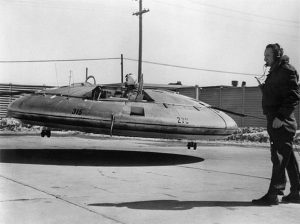
The Pentagon has spent a lot of effort and money on the flying saucer project, but it has not been successful.
This problem caused the flying saucer to constantly stall and lose control, especially when traveling at high speed. It took the pilot 5 seconds to turn the plane 90 degrees left, but 11 seconds to turn right. The manufacturer convinced the US Air Force that they would work to fix the problem. In September 1961, VZ-9 continued to test flight for the US Air Force to evaluate.
However, this time, the flying saucer could not even take off from the ground, the maximum height it reached was less than 1m. The speed of the plane is also only 56km / h. In December 1961, when the problems discovered during the test were still not eliminated, the Pentagon officially stopped funding this project.
According to some sources, the total amount that the US Department of Defense has spent on this project is up to 10 million USD, equivalent to about 80 million USD today. VZ-9 officially failed. However, this project still paved the way for the development of air-buffer ships later. Prototypes of two later Boeing YC-14 and McDonnell Douglas YC-15 aircraft were based on the project’s studies.
In particular, the central lifting fan system of the vertical take-off version of the F-35B is said to have also applied some of the technology from the program. Of the two Avrocars that have been produced and tested, one is now kept at the US Army Transport Museum in Virginia, and the other is on display at the National Museum of the US Air Force in Dayton. , Ohio State.
In addition, this failed project is also said to have contributed to the weaving of more mystical stories about UFOs. Evidence-based people believe that the images that are still rumored to be images of unidentified flying objects are in fact the disc-shaped aircraft tested by the US at a secret base. .
These people argue that a series of flying saucer accidents reported in the 1950s are also believed to be the result of a series of secret American experiments during this time. However, there are also objections to this view because UFO sightings were actually reported decades before the US secret project started.
According to Baophapluat

